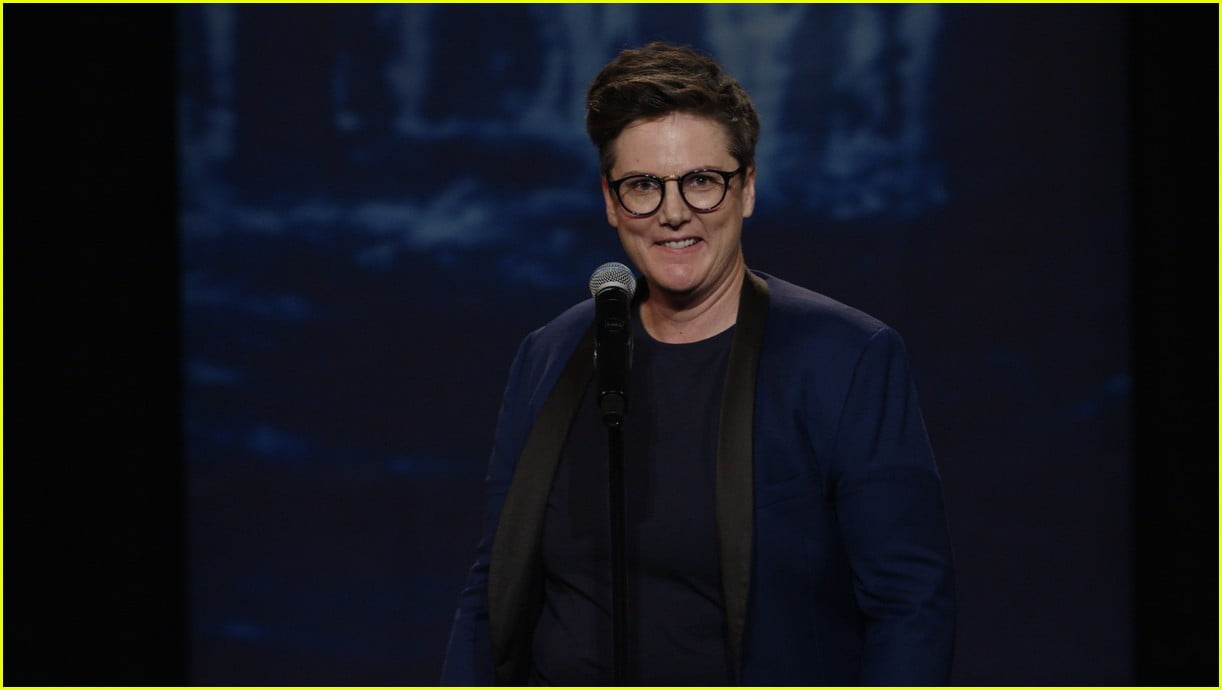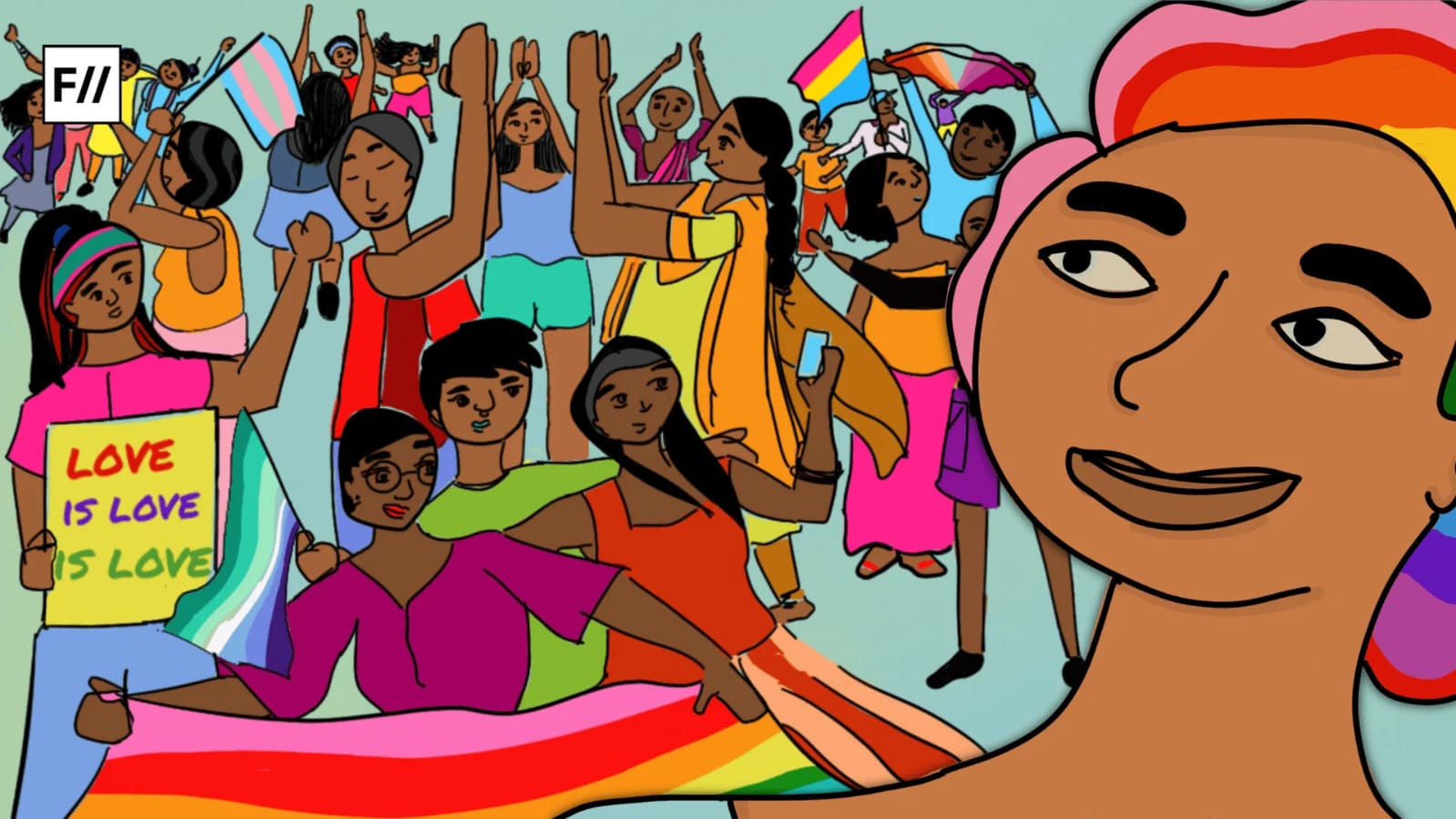The first time I saw Hannah Gadsby was on the Netflix show, Please Like Me, which was centred on the life of a man who’d just come out to his friends and family in his mid-20’s. In the midst of extremely privileged millennials (who have rich fathers paying their college fees and gifting them cars), Hannah’s character stood out as the quiet, angry lesbian who dislikes going out and is annoyed and bewildered by the enthusiastic behaviour of those around her.
I imagined she would carry the same image of herself for her new Netflix comedy show Nanette, which she does, to a certain extent. She begins by commenting on how there is so much “pressure on our people to express our identity and pride through the metaphor of a party”. Moving away from this stereotype she says, “I’m a quiet person. My favourite sound in the whole world is the sound of a teacup finding its place on a saucer.”
But Gadsby manages to move out of this tightly nailed picture of how Hannah was written on Please Like Me, which I had so neatly etched in my mind – of someone who coped with their haunting past and mental health issues through humour, and replied in short sentences filled with sarcasm and self deprecation. However, in Nanette, Hannah Gadsby is angry, articulate, and unapologetic.
Hannah Gadsby at the beginning of 2017 had announced that she would be leaving comedy. Nanette is her final and moving goodbye, one which she ensures you’ll remember. While the show builds up to her main argument as to why she wants to leave comedy, it traverses various topics. This ranges from her personal likes and dislikes, her personal trauma, heralding the #MeToo movement, and even delves into larger analysis of our hetero-patriarchal society.
Nanette is so many things at once that it would be unjust to simply say this it is the story of a queer woman.
But there is no such artificial divide between the personal and the political in her show. She manages to effortlessly bring in how her personal experiences have always been informed by how the ‘gender-normals’ treat queer people.
“I took a long time to come in terms with my homosexuality. A lot of it had to do with bad press. And they didn’t give a good rap when I was growing up, the homosexuals,” she says remarking on how it was like growing up queer in Tasmania, where homosexuality was decriminalized only in 1997.
The initial parts of the show deal mainly with her personal journey growing up in a place where 70 percent of the people thought that homosexuality was a sin that should be criminalized. She also gives her reactions to criticism of her work not having enough ‘lesbian content’. In response to it she says, “I was there on the stage the whole time!”
there is no such artificial divide between the personal and the political in her show.
The real shift in tone takes place when she says she will no longer partake in self- deprecatory humour. “For those living on the margins, it is not humility. It is humiliation”. Self-deprecatory humour becomes a way for marginalized people to live with the stigma attached to their lives, to find ways to exist in places they were never welcomed or allowed. She therefore makes a defiant announcement – she is no longer ashamed and no longer afraid.
This was just one of the many places where she manages to strike you with her sharp insight. It is liberating to hear her talk about why she refuses to humiliate herself in order to occupy space. She is poetic and sensitive in how she articulates, but her ultimate message is undoubtedly brutal and honest.
Her aim in Nanette is not to provide comfort or consolation through her comedy or jokes. Her endeavour is to make her pain palpable, a living body for everyone who has been complacent till now (but most importantly the straight white man), to feel and experience. If the two components of a joke are set up and punch line, wherein the former is used to artificially create tension and the latter is suppose to diffuse it, she refuses to relieve us off the dense pressure she creates.
It is liberating to hear her talk about why she refuses to humiliate herself in order to occupy space.
Her anger is directed not only at the men who’d personally been violent towards her but the celebrities and the ‘broken genius men’ who are enabled by our culture. Her irreverence is towards painters who were responsible for “painting flesh vases for their dick flowers”. There is a sense of urgency with which she talks about how we need to stop normalising the abusive behaviour of men. She points to how history has been a silent observer to the pain of women whilst blindly glorifying the work of men.
In our celebration of Picasso and cubism, we forget that he was abusive to a 17-year old girl. Gadsby ultimately connects this to how powerful, abusive men like Donald Trump, Harvey Weinstein, Bill Cosby, Roman Polanski and Louis C. K. continue to enjoy public adoration and respect.
In the end, it is an exploration of what it means to live and act as moral beings. Her anger and hurt are at foundation of her appeal to straight white men to ‘pull their socks up’.
She explains her opposition to comedy by dissecting the inner workings of a joke with clinical precision, laying bare how its very design demands dishonesty. A joke functions without the need for a context, nuance or an ending. It requires simplification, a lightening of one’s pain. Gadsby says, “I have a responsibility to make you laugh. But I’m not in the mood.”
Hers is a feminist inspection and critique of the ways we choose to talk about our pain. Jokes can’t encompass the varying hues of her story as a ‘not-normal’ lesbian woman; they can’t explain why her mother was hesitant to accept her as a lesbian. They merely act as survival tactics used to cover the shame she felt.
Nanette is so many things at once that it would be unjust to simply say this it is the story of a queer woman. But at its heart it is a narrative of sorrow, shame, empathy and most importantly strength. Gadsby ends the show with the point – “There is nothing stronger than a broken woman who has rebuilt herself.”
Hers is a feminist inspection and critique of the ways we choose to talk about our pain.
Nanette shows what it means to create narratives of our experiences. It also shows how queer people can live in spaces beyond the confines of their experience as one. When Gadsby speaks, she is kind and forgiving to herself by allowing herself to be at the centre of the story and refusing to placate others discomfort. It is an example of how talking about our stories can be a site for healing and catalyst for change.
At a time when Indian media only shows you stories of queer women as victims, where they are seen as mute beings doing shame worthy things, Nanette restores your health and mind. It is ultimately a larger lesson in how we should hold discussions about important issues with each other. Watching Hannah Gadsby locate her pain, and direct her fury in constructive ways, Nanette gives you the opportunity to and the ways through which you can heal.
Featured Image: Just Jared
About the author(s)
Umara is pursuing her bachelors in history from St.Stephen’s college. Feminism to her is an evolving process, she doesn’t feel the need to define her version of it, because she comes from the belief of autonomy of the oppressed classes.




